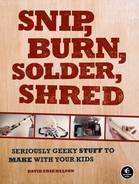In my old life, before my son was born, I taught at a small, innovative private school where students were asked to take control of their educations, make their own choices, and then reap the rewards or endure the consequences. Staff and students were required to treat each other as equals. Because of the realities of private education in America, such a school had to be run on a shoestring budget and largely served “troubled” kids.
The big-hearted, late-1960s ethos of the place was unspeakably foreign to me: I had myself attended an elite prep school and Big Ten university and had no training in education; fortunately, at that time, Michigan’s stringent requirements for a private school teacher was that he or she be hired by a private school to teach something. I passed the background check. I was not given a drug test.
The environment was stressful for everyone, but it was good for the students: Many came in with drug problems, having just left psychiatric institutions, or having spent months or years out of conventional school because of anxiety or abject misery. They left our school feeling better about themselves and their futures; went on to attend colleges, universities, or vocational programs or enter the work force; and now are musicians, sound engineers, academics, artists, carpenters, or deep in the mire of grad school.
What’s between these covers represents the best of what I learned as a teacher at this radically egalitarian school with a good heart and no budget. Many of these are the same projects I built with those kids. Every single project in this book has three key qualities:
You will make a wicked awesome Thing.
You will do it for cheap (or free!).
In making this Thing you will pick up a transferable skill or fundamental understanding of the Thing and thus be able to modify or make new Wicked Awesome Things.
The 24 projects in this book are grouped into three parts. Within each section, the projects are organized roughly by how challenging they are to build, with easier projects coming first—that said, you should build whichever project strikes your fancy right now.
Part I showcases projects suitable for a range of ages (both in their construction and the final product). The skills taught include basic sewing, carpentry, and electronics. The toys and games go from toddler-friendly (the Lock-n-Latch Treasure Chest and the PVC Teepee) to more suitable for middle school–aged and older kids. Heck, most adult men will get a kick out of the Ticklebox, and the whole family can make a game night out of Go, Tafl, or Shut-the-Box.
Part II is all music projects and calls for slightly more advanced carpentry and soldering skills—several of these (including the Dirt-Cheap Amp and the core of the Cigar Box Synthesizer) were projects I used to teach soldering to young high schoolers. The resulting instruments are safe for all ages (my four-year-old and his friends love the drums, Electro-Didgeridoo, and $10 Electric Guitar) and can make real music.
The final section, Part III is dedicated to flying and projectile toys. Some—like the Cardboard Boomerangs and FedEx Kites—are safe and easy even for elementary schoolers, although they captivated even the most jaded teenage smokers back when I was teaching. Others—like the Marshmallow Muzzleloader and Putt-Putt Boat—are going to require a little more technical acumen and manual dexterity.
Every project is written with the absolute beginner in mind—this can be the first time you’ve ever threaded a needle or warmed up a soldering iron, and you can expect to get a decent result. And these projects run the gamut: If you’re a sewer who’s never touched a saw, I’ve got projects for you. If you’re a musician who’s never soldered, flip to Part II and start building your electro-skiffle band today. But before you jump in, I want to impress a few safety tips that I picked up while teaching at the Hippie School for Troubled Youths:
In order to learn about the real world, you need to use real tools; nothing in this book is dumbed down or babyfied. Show caution, heed the warnings, and wear goggles, masks, and work gloves when advised to do so: Sawdust and PVC chips can wreck up your eyes; soldering irons, torches, and fire can burn you; saws and knives can cut you; pins and needles can poke you; electricity can zap you.
Work outside when advised to do so; I mention phosgene gas (released when PVC is heated) several times—please take this seriously! The same goes for spray-paint or anything else fumey.
Just like working out of Betty Crocker, make a point of reading every step of a project before doing anything; you want to have a full understanding of what’s going to be asked of you and what you’ll need at hand before launching into making.
And lastly, don’t let these warnings dissuade you from making these projects! Drug-addled teens were able to complete them without injury or mishap.
